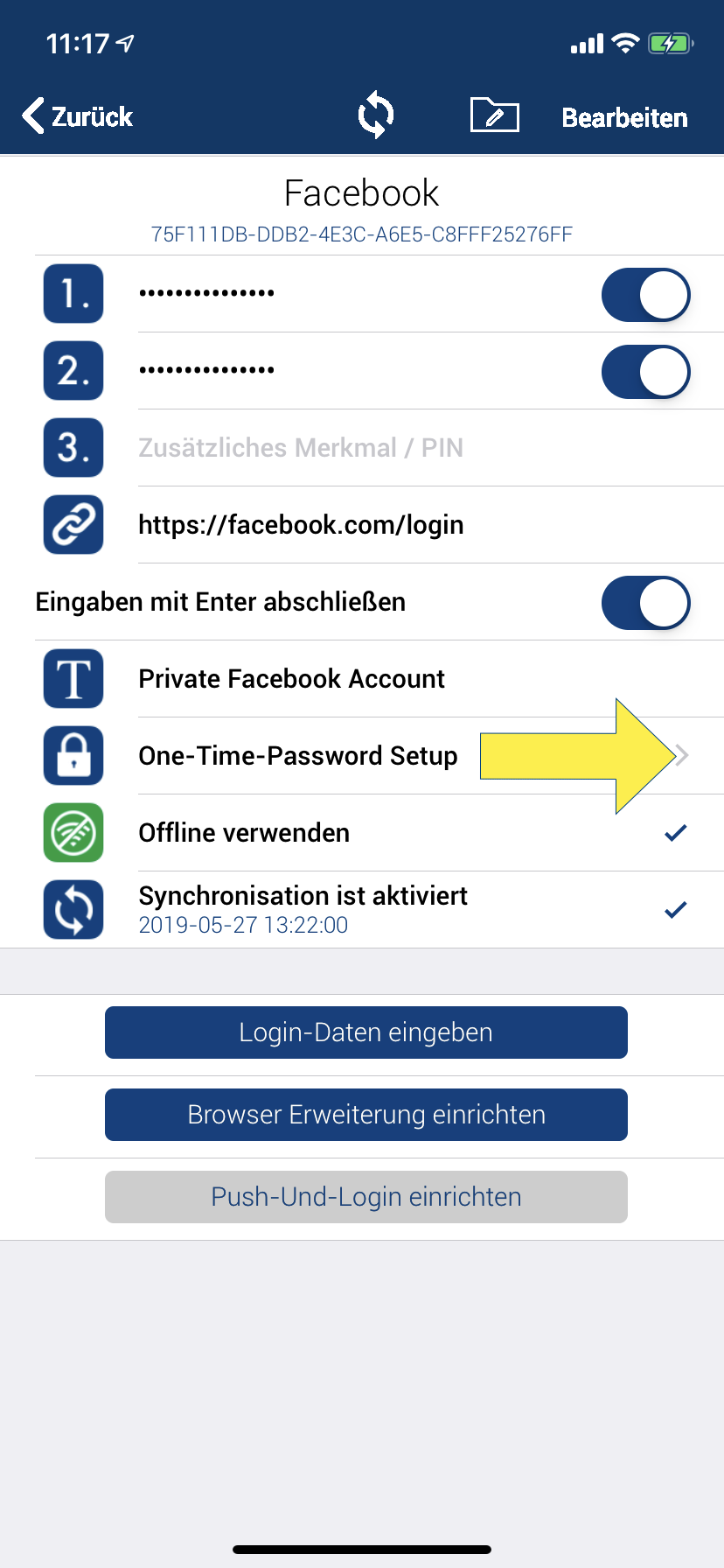What is a OTP?
 Strictly spoken, the method used for Phrase-Lock is not OTP, but T-OTP. The “T” stands for “Time based”. In other words: “Time based One Time Password”. You could also say, “Time-dependent one-time password”. As you can see, the terms are somewhat unwieldy.
Strictly spoken, the method used for Phrase-Lock is not OTP, but T-OTP. The “T” stands for “Time based”. In other words: “Time based One Time Password”. You could also say, “Time-dependent one-time password”. As you can see, the terms are somewhat unwieldy.
So what does that mean in simple terms? There is an OTP starting value (a large secret number) known to both your phone and the corresponding server. The clock on your phone is extremely accurate in most cases, just like that of the server. If you want to log in now and you need an OTP, your phone calculates an OTP from the current time. The OTP is the last element to be entered via your telephone when you log in. The server now also calculates the OTP from the time and compares the two values. If they match, you will continue. Otherwise you cannot log in.
This procedure is considered quite safe because it is difficult to guess an OTP for a certain time.
Setting up an OTP
 In the „Details“ mask of a login data record you will see the „One-Time-Password Setup“ menu item. You should already know how to get there from „Edit Login Data“.
In the „Details“ mask of a login data record you will see the „One-Time-Password Setup“ menu item. You should already know how to get there from „Edit Login Data“.
Now tap the displayed menu item to open the T-OTP setup screen. Whether you have to enter the starting value manually or scan it depends entirely on the provider of these logins.
If you want to set up a T-OTP for a specific page but can’t get along with it, we’ll be happy to assist you.
Applying the OTP
 After you have successfully created an OTP, you will see another button to enter the current OTP in the send mask below the large blue “Enter now” button. Below this, a blue progress bar shows how long the current OTP is still valid. OTPs are usually valid for 30 seconds and change immediately afterwards.
After you have successfully created an OTP, you will see another button to enter the current OTP in the send mask below the large blue “Enter now” button. Below this, a blue progress bar shows how long the current OTP is still valid. OTPs are usually valid for 30 seconds and change immediately afterwards.
When the desired login page prompts you to enter the OTP, just tap it and it will be entered automatically.
OTP, or T-OTP, is not a very common term for many users and many don’t know what to do with it, although the achievable security is very high. We are therefore happy to help you if you have general or specific questions.
 Strictly spoken, the method used for Phrase-Lock is not OTP, but T-OTP. The “T” stands for “Time based”. In other words: “Time based One Time Password”. You could also say, “Time-dependent one-time password”. As you can see, the terms are somewhat unwieldy.
Strictly spoken, the method used for Phrase-Lock is not OTP, but T-OTP. The “T” stands for “Time based”. In other words: “Time based One Time Password”. You could also say, “Time-dependent one-time password”. As you can see, the terms are somewhat unwieldy. In the „Details“ mask of a login data record you will see the „One-Time-Password Setup“ menu item. You should already know how to get there from „Edit Login Data“.
In the „Details“ mask of a login data record you will see the „One-Time-Password Setup“ menu item. You should already know how to get there from „Edit Login Data“. After you have successfully created an OTP, you will see another button to enter the current OTP in the send mask below the large blue “Enter now” button. Below this, a blue progress bar shows how long the current OTP is still valid. OTPs are usually valid for 30 seconds and change immediately afterwards.
After you have successfully created an OTP, you will see another button to enter the current OTP in the send mask below the large blue “Enter now” button. Below this, a blue progress bar shows how long the current OTP is still valid. OTPs are usually valid for 30 seconds and change immediately afterwards.
